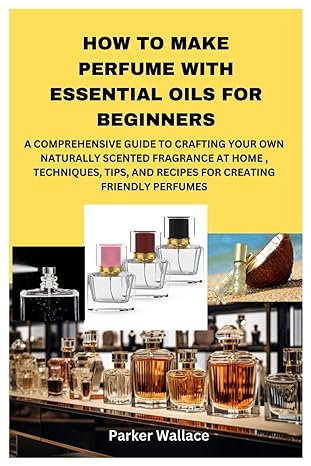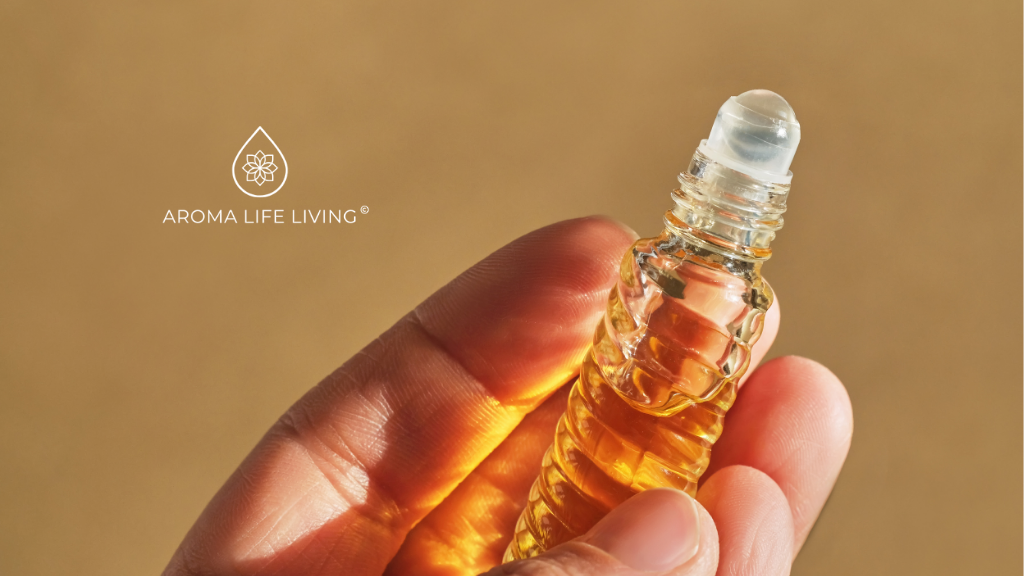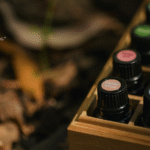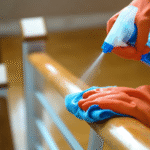Creating Your Own Perfume With Essential Oils
If you’ve ever wished for a signature scent that’s 100% natural, unique, and free from harsh chemicals, crafting your own perfume with essential oils is the perfect way to express your personal style.
Essential oils not only smell wonderful but also provide emotional and aromatherapeutic benefits — helping you feel calm, confident, or energized with every breath.
In this guide, you’ll learn exactly how to make your own perfume and home fragrance, discover the best carrier oils to use, and find simple steps for beginners to create personalized scents that reflect who you are.
How Do You Make Your Own Perfume With Essential Oils?
Making your own perfume with essential oils is both simple and creative. It’s all about combining different “notes” — top, middle, and base — to create a balanced and long-lasting fragrance.
Here’s a step-by-step guide:
Ingredients:
- 10 ml glass roller or spray bottle
- 10–15 drops of essential oils (total)
- 1 tablespoon of a carrier oil (like jojoba or fractionated coconut oil) or alcohol (for sprays)
Instructions:
- Choose your scent blend (see examples below).
- Add your essential oils to the bottle — starting with base notes, then middle, and finally top notes.
- Fill the rest of the bottle with your carrier oil or alcohol.
- Shake gently to blend and let it sit for 24–48 hours (the scent develops over time).
Example Blends:
- Floral Calm: Lavender (middle), Ylang-Ylang (base), Bergamot (top)
- Citrus Fresh: Orange (top), Lemongrass (middle), Cedarwood (base)
- Romantic Blend: Rose (middle), Vanilla (base), Grapefruit (top)
What to Mix With Essential Oils for Perfume
Essential oils must always be diluted before use on the skin. You can mix them with carrier oils or perfume alcohols depending on your preference:
- For oil-based perfumes: use jojoba, sweet almond, or coconut oil.
- For spray perfumes: mix essential oils with high-proof alcohol (like vodka) or perfumer’s alcohol.
Optional additions:
- A few drops of vitamin E to preserve freshness.
- A small amount of distilled water (for sprays only).
What Is the Best Carrier Oil for Perfume?
The best carrier oils are those that are light, non-greasy, and have little to no scent, allowing your essential oils to shine through.
Top choices include:
- Jojoba oil: Closest to skin’s natural sebum; long shelf life and excellent absorption.
- Fractionated coconut oil: Lightweight, odorless, and ideal for roll-on perfumes.
- Sweet almond oil: Nourishing for the skin, slightly thicker texture.
For long-lasting perfume, jojoba oil is often the best choice.
How to Make Your Own Home Fragrance With Essential Oils
If you want your home to smell as beautiful as your perfume, you can easily create natural air or linen sprays with essential oils.
Simple Home Fragrance Spray Recipe:
- 1 cup distilled water
- 2 tablespoons witch hazel or vodka
- 20–30 drops of essential oils
Instructions:
- Combine all ingredients in a glass spray bottle.
- Shake before each use.
- Mist into the air, onto fabrics, or in closets for a natural scent refresh.
Great blends for the home:
- Clean & Fresh: Lemon, Tea Tree, and Eucalyptus
- Cozy & Calm: Vanilla, Lavender, and Cedarwood
- Energizing: Peppermint, Orange, and Rosemary
How to Make Your Own Fragrance for Beginners
If you’re just starting out, follow these three easy steps:
- Pick a theme: floral, woody, citrus, spicy, or fresh.
- Choose three essential oils — one from each note group:
- Top notes (evaporate quickly): Lemon, Orange, Peppermint
- Middle notes (the heart of your scent): Lavender, Rose, Geranium
- Base notes (last longest): Vanilla, Patchouli, Sandalwood
- Blend and test: Start with 3 drops of base, 5 drops of middle, and 2 drops of top note. Adjust until you find your favorite combination.
Over time, you’ll develop an intuition for balancing scents — and each blend will tell a little story about you.
Tips for Long-Lasting Natural Perfumes
- Store your perfume in a dark glass bottle, away from heat and sunlight.
- Let it “mature” for a few days before use — scents deepen over time.
- Apply on pulse points (wrists, neck, behind ears) for best diffusion.
- Reapply during the day, as natural perfumes fade faster than synthetic ones.
Final Thoughts
Creating your own perfume with essential oils is an art of self-expression — and a healthier alternative to commercial fragrances.
With just a few ingredients and some creativity, you can craft natural scents that elevate your mood, support your well-being, and smell absolutely divine.
Whether it’s for personal use or as a thoughtful gift, your handmade essential oil perfume is sure to leave a beautiful, lasting impression.




